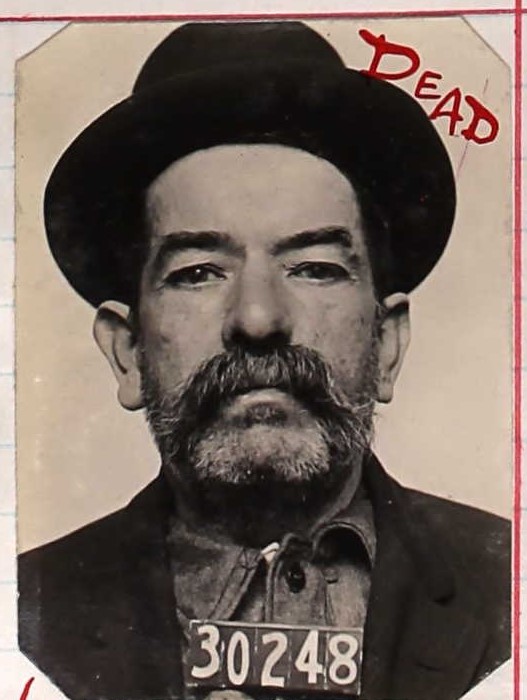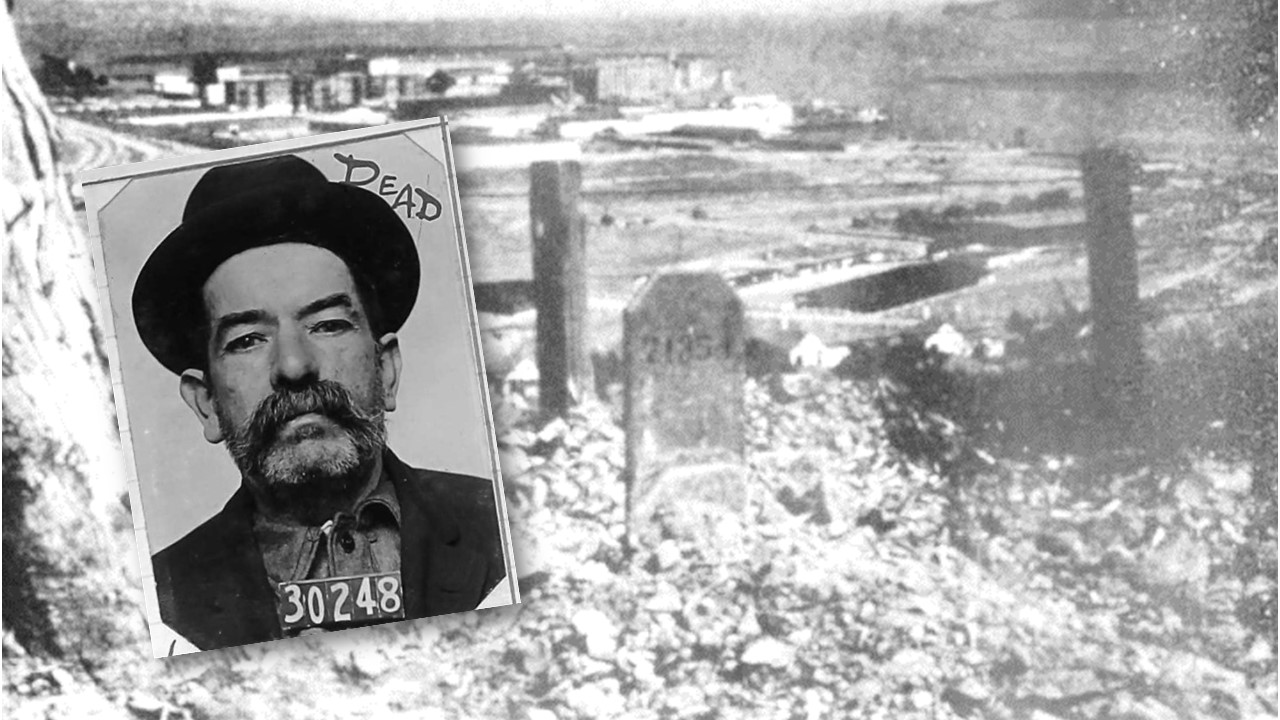An unanswered complaint about food quality ended with the shooting death of a hospital superintendent in 1916. The man responsible for the slaying, Thomas Monk, admitted firing the gun, but claimed self defense.
The victim was 43-year-old George Arthur Stewart, superintendent of the Nevada County hospital. He was shot Nov. 10, 1916. Despite surgery and other attempts to save his life, he passed away five days later. The victim’s final resting place is St. Patrick Catholic Cemetery in Grass Valley.
Homeless, addiction services offered at hospitals
Monk was staying at the Nevada County hospital as a part-time resident. Like other residents of facilities, hospitals, and boarding houses in the early 1900s, they were called inmates.
Those convicted of crimes and sentenced to a state prison were called convicts, felons or prisoners. The word “inmate” essentially referred to someone needing help or treatment and wasn’t adopted by prisons until the reform era of the 1940s and 1950s.
Monk describes altercation in his own words

“Last July I complained to the supervisors about the (hospital) cook and he was fired. Since that time, we have been getting rotten food, no pie or cake. They don’t put any coffee in the coffee and it is not fit to drink. I complained (to two supervisors) and they paid no attention to me. I told them if they didn’t, it would cost the county more than (the superintendent) was worth to them,” he told police.
Coming and going as he pleased, despite warnings by Stewart, Monk refused to follow the hospital’s rules.
“Stewart told me that I would have to leave the hospital. I could have my dinner but could not sleep there tonight. I told him that I would either sleep there tonight or in the county jail and I didn’t care which,” Monk said. “The county jail was the best place of the two.”
Two weeks before the shooting, Monk asked Deputy Sheriff Henry Witter how many people were lodged at the jail. Hearing there were four or five people occupying cells, Monk responded, “Well, maybe I will be down there before long. I hear they feed down there better than they do (at the hospital) and I may come down for a long stay.”
Victim makes statement before passing
“This man who shot me has been giving a lot of trouble here by going to town without permission. I have put up with this and a lot of other things for the past month and some of the other inmates complained of the privileges he had. Finally, I told him that he would have to leave the institution or submit to the rules,” he told the court reporter from his hospital bed. “He told me I would have to put him out (so) I took hold of him by the shoulder and told him to put on his hat and coat.”
The nurse began helping Stewart escort Monk out of the building.
“I was following behind and must have been about eight feet behind him. He was struggling with the nurse and he turned around and deliberately shot me in the stomach. The first shot hit me and I turned and ran. He fired two more shots. I did not hit him at all (and only) told him to leave the ward. I make this statement as a dying declaration of this occurrence and under the sense of impending death.”
Monk’s tale ends at San Quentin
After the shooting, Monk went into town to turn himself in. At first, he wasn’t remorseful over his actions. At one point, Monk said he killed Stewart quickly whereas the poor hospital food was killing him and his fellow residents slowly.
When he realized he would be charged with first-degree murder, Monk softened his stance. The jury was split on the sentencing but finally landed on life in prison rather than the death penalty.
Monk requested incarceration at San Quentin due to his health.
He was received at San Quentin on Jan. 23, 1917. He passed away at the prison hospital on Oct. 22, 1926. Unclaimed, Monk was buried in the prison cemetery.
Learn more about California prison history.
Follow CDCR on YouTube, Facebook, X (formerly Twitter). Listen to the CDCR Unlocked podcast.
